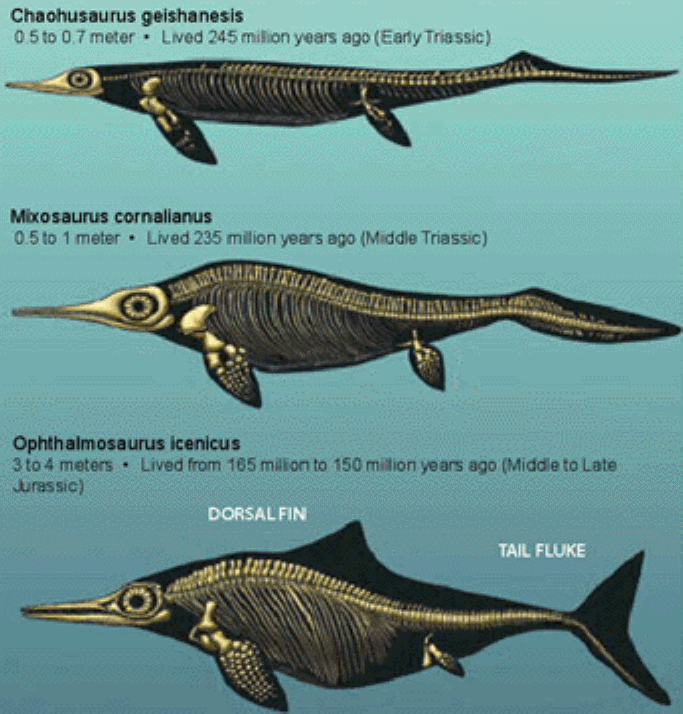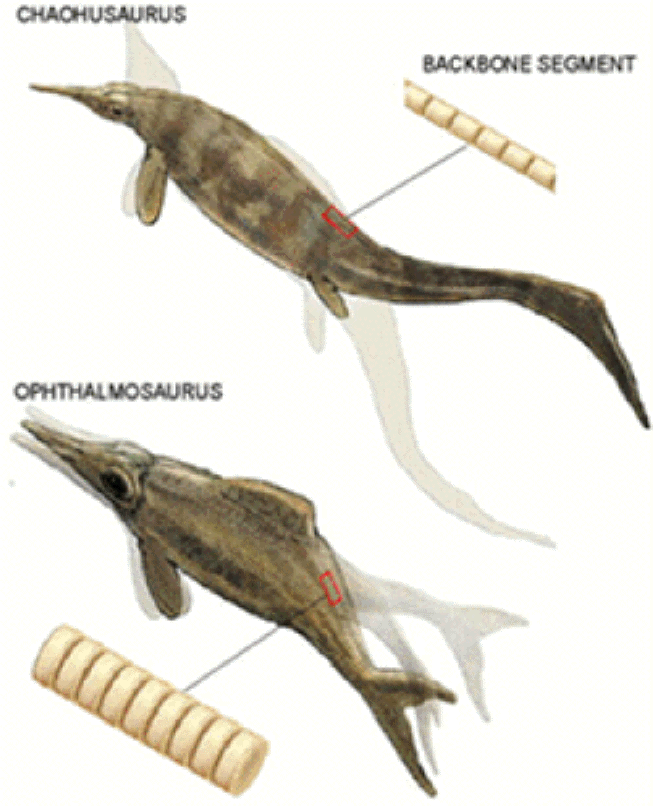|
Ichthyopterygia ("fish flippers") was a
designation introduced by Sir Richard Owen in 1840 to designate the
Jurassic Ichthyosaurs that were known at the time, but the term is now
used more often for both true Ichthyosauria and their more primitive
early and middle Triassic ancestors (Motani 1997, Motani et al. 1998).
These basal Ichthyopterygians were mostly
small (a meter or less in length) with elongate bodies and long spool
shaped vertebrae, indicating that they swam in a sinuous eel-like
manner. This allowed for quick movements and maneouverability that
were an advantage in shallow-water hunting (Motani 2000). Even at this
early stage they were already very specialized animals with proper
flippers, and would have been incapable of movement on land.
These animals seem to have been widely
distributed around the coast of the northern half of Pangea, as they
are known the Late Olenekian and Early Anisian (early part of the
Triassic period) of Japan, China, Canada, and Spitsbergen (Norway). By
the later part of the Middle Triassic they were extinct, having been
replaced by their descendents the true ichthyosaurs.


|